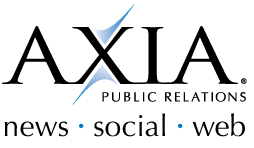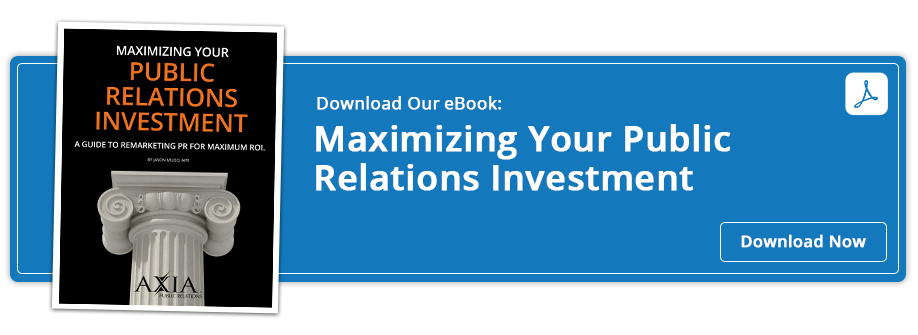How to know if newsletter marketing is the right content marketing strategy for your company and tips to get you started.
 Newsletter marketing is an effective way to move the needle on business development objectives such as finding new clients, growing relationships with existing ones, securing new partnerships in the space or credentialing yourself as a stronger thought leader in the industry.
Newsletter marketing is an effective way to move the needle on business development objectives such as finding new clients, growing relationships with existing ones, securing new partnerships in the space or credentialing yourself as a stronger thought leader in the industry.
Audio: Listen to this article.
Most organizations are under the misconception that they “don’t have enough news to share” or “don’t have the time to write up fresh newsletter content” on a regular basis. The reality is you can deliver a consistent newsletter repurposing a lot of content you already have at your fingertips.
Here’s a breakdown of newsletter basics to get you started.
What is the purpose of a company newsletter?
The time-tested Marketing Rule of 7 principle asserts that a potential customer needs to be exposed to a brand's marketing messages at least seven times before they make an actionable decision. It can be challenging to think of new ways to appear on your audience’s radar that consistently without getting monotonous.
Newsletter content is often written in a way that is more news and thought leadership driven, and less “sales and marketing,” offering valuable content to start conversations that your audience might be more inclined to forward along to their network. This content marketing strategy also offers a way to consolidate all company news out on social media, at events, and what’s been discussed with clients and partners in skimmable updates. Anything they might have missed on their feed, they can see when your newsletter hits their inbox!
And finally, putting an opt-in for newsletter updates on your website allows future clients and partners to share their contact information to start receiving news from your organization. This feature allows you to start growing your list of customers organically, while offering them something in return.
How often should you send out newsletters?
When it comes to cadence, the most important thing is consistency. If you can’t commit to a weekly or monthly newsletter, consider a quarterly or bi-annual newsletter to start. You will lose your audience’s attention if the updates start monthly, then suddenly you skip a few, start back up again, and drop off sporadically. Consistency is key!
Here’s a quick guide to see where your company might align:
- Weekly newsletters are best for those with regular news coverage, actively engaged in the events and awards circuit, and publishing weekly blogs, videos, podcasts, or other thought leadership content.
- Monthly newsletters are best for those interested in challenging their companies to create more thought leadership content and aggressively grow client relationships. A monthly newsletter gives you an opportunity to share more owned content with your readers, respond to trending topics unfolding in the news, and keep your audience up to date with your internal happenings.
- Quarterly newsletters are best for those who don’t have the resources to consistently develop fresh thought leadership content every month, but want to make sure their clients and shareholders are seeing their quarterly traction. A quarterly newsletter can include recaps of earned media, social media, events and awards, blogs, or thoughts from your CEO. It can also serve as a great measurement reporting system.
- Bi-annual newsletters are best for those who are interested in testing out whether an email marketing strategy is right for them. If you aren’t sure you want to devote the resources to writing owned content for your organization and are in a growth stage without many public updates to share, this is a great way to get started, test the waters, and grow more consistent over time as you build out your email list.
Another thing to keep in mind is now that you have this list of engaged readers who have signed up for your email updates, should you ever have other one-off news they might be interested in, like an event you are hosting or a promotion for a new product launch, you now have a way to contact them outside of your newsletter updates. Though you’ll want to do this sparingly to avoid spamming their inbox and users unsubscribing.
What should you include in your email newsletter?
Creating a consistent newsletter format is a great way to keep readers engaged. As they start regularly receiving your updates, they’ll then become familiar with what to expect and be more inclined to click through. For example, you could follow a format something like this:
- Thoughts from our CEO: Include 2-3 sentences or bullet points of high-level thoughts from your leadership team, ideally targeting evergreen industry trends or the top concerns your audience is facing.
- Company News: Include a section that breaks down your recent news announcements, mentions in the media, noteworthy social media posts, events or awards, and owned content, like blogs or contributed articles. To keep it digestible, keep it to about three highlights max.
- What We’re Reading: Share links to a few of your favorite news articles since the last newsletter updates (the more timely the better), content your partners have published that your audience might be interested in, or thought leadership content written by other industry leaders you found insightful. You can include your own analysis on some of these trends as well.
- Links, links, links: Include backlinks to your website, social media channels, and a relevant contact at your organization in every newsletter so your audience can take action on the items you’ve shared.
Creating this balance of news about your organization and news unfolding in your industry externally shows your readers you are actively following trends beyond the four walls of your company, further credentialing you as an industry thought leader and giving you an opportunity to engage with your audience outside of a sales pitch.
How do you get started?
When it comes to logistics like collecting emails, designing a newsletter and hitting send, here are a few popular tools to get you started.
- Make sure you log all of the emails members of your organization already have in their contact list into one spot (i.e. current customers, partners, prospects and relevant personal networks). Consider consolidating in an excel sheet with name, contact info, and existing relationship.
- Set up an opt-in on your website for visitors to sign up for your newsletter by entering their email address and other relevant information about their role and interest in your company (optional).
- Begin looking into platforms to send out your newsletter and track performance, like MailChimp, and explore free trials or membership deals to find the one that best suits your organization. Many of these platforms already have newsletter templates you can use as a starting point.
- If you’re looking to really make a splash with your newsletter design, toy around with the Newsletter templates in Canva, allowing more detailed customization than might be available in the standard tools.
For more information on how we can elevate your PR strategy, contact us today or book a one-on-one consultation.
Photo by Ketut Subiyanto
Topics: digital PR, PR tips



Comment on This Article